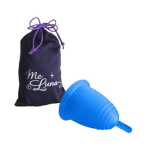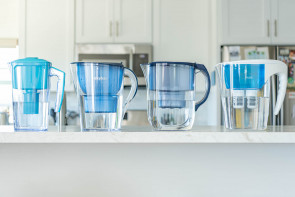
The Best Menstrual Cups
The idea of using a menstrual cup can be intimidating, especially for beginners — so we dove in and put six top-rated cups to the test so you don’t have to. We also talked with menstrual cup experts to demystify the topic and gleaned their best tips and advice for first-timers.
After our research, we’ve determined that the best menstrual cup is the MeLuna Classic Cup, a medium-soft, simple-to-use TPE cup that comes in a wide variety of sizes and designs to suit virtually any woman’s body. Our runner-up, the medium-soft silicone Lena Cup, folds easily and is equally breezy to insert and remove, with a well-ribbed, highly grippable stem.
Table of contents
- Finding your “Goldilocks” cup
- How we selected products to test
- Compare the best menstrual cups
- Pros and cons of using a menstrual cup
- How we tested
- Best for beginners: MeLuna – Classic Cup
- Runner-up: Lena Cup
- The other finalists we tested
- The bottom line
Finding your “Goldilocks” cup
Selecting the right menstrual cup for your body is not quite as simple as choosing between light, super and super plus — the typical options for tampons and pads. When buying a menstrual cup, several other factors need to be taken into consideration to find the perfect fit.
To break down this process, we talked to Kim Rosas and Amanda Hearn of PutACupInIt.com, a menstrual mothership of a site packed with straightforward information, how-to videos and down-to-earth advice on all things period cups.
“One of the biggest mistakes women make when using a cup for the first time is choosing one randomly,” says Amanda. “Most often we hear that the cup someone has purchased is just too long. Another thing we see is people choosing what we consider to be a knock-off cup. These are usually priced very low on deal sites, and the materials used tend to be either extremely soft or extremely firm.”
To help women pinpoint the best cups for their unique anatomy, Kim and Amanda developed a quiz based on factors like cervix height (which determines the cup length you need), pregnancy history or virginity (cup width), menstrual flow (cup capacity) and vaginal sensitivity and pelvic floor strength (cup material and firmness). Never had a reason to determine your cervix height or pelvic floor strength? The site includes step-by-step instructions for determining these factors.
“In general, if you have heavy cramping, vaginal sensitivity or bladder issues of any kind, you’ll likely want a softer cup,” advise Kim and Amanda. “Those new to cups — without any sensitivities — are usually best off with a firmer cup because it will open easier. Also, those who are very active and have a strong pelvic floor typically benefit from a firmer cup.”
How we selected products to test
After speaking to Kim and Amanda and spending hours on their site to bulk up on our menstrual cup know-how, we sifted through Reddit, MenstrualCupReviews.net and YouTube to gather tips and recommendations from both beginners and seasoned cuppers. We also noted the fears and concerns women expressed about using a menstrual cup for the first time.
We then drew up a list of product features that would make menstrual cup use easier for beginners across the board (regardless of individual anatomy):
- Cups that come in a variety of lengths, widths and firmnesses
- Cups made of high-quality medical-grade silicone or TPE (which becomes more flexible as it warms up)
- Great customer service ratings and clear instructions available on the brand websites
Compare the best menstrual cups
| Menstrual Cup | Price | Material | Capacities (mL) | Diameters (mm) |
|---|---|---|---|---|
| 1. MeLuna Cup | $$$ | TPE | 8, 10, 14, 15, 16, 20, 24, 30 | 38, 41, 44, 47 |
| 2. Lena Cup | $$ | Silicone | 25, 30 | 41, 45 |
| 3. Saalt Cup | $$$ | Silicone | 25, 30 | 47, 52 |
| 4. DivaCup | $$ | Silicone | 17, 30 | 40, 43, 46 |
| 5. Lunette Cup | $$$$ | Silicone | 25, 30 | 41, 46 |
| 6. Intimina Lily Cup | $$$ | Silicone | 20, 25, 28 | 39, 40, 42, 44, 45 |
Pros and cons of using a menstrual cup
Benefits
- Money-saving: Although a menstrual cup is initially more expensive than a box of tampons or pads, with proper care your cup will last a year at the very least.
- Good for the planet: Tampons, pads and panty liners create over 200,000 tons of waste per year (along with their packaging and individual wrapping).
- Longer-wearing: Menstrual cups can be safely worn for up to 12 hours. If you time things right, you will only need to remove and re-insert your cup from the comfort of your own home and not in a public restroom.
- Reduced risk of TSS: Today, it’s estimated that TSS affects one out of every 100,000 women aged 19 to 44, with most cases found in menstruating women using highly absorbent tampons. Only two cases total have been reported worldwide of TSS related to menstrual cup use, and that was caused by extremely prolonged use (those affected had left their cups in for 7 days). Cup users should boil their cups to fully remove bacteria, and consider keeping two or three cups on hand so each one can be sterilized before use.
Drawbacks
- Finding the right fit: It takes time, research and possibly some trial and error to figure out what cup size and firmness will work best for you.
- A bit of a mess: There’s a learning curve when it comes to removing and emptying your cup neatly.
- May not play well with IUDs: Many manufacturers don’t recommend using menstrual cups with an IUD inserted, in case the cup pulls on the IUD string (though a study conducted in 2012 found no evidence of this happening).
How we tested
As first-time menstrual cup users ourselves, we gave our honest impressions of our experience with each cup in our lineup, and rated the cups based on the following criteria:
- Ease of application
- Firmness (this factors into how easily a cup “pops open” and settles into place after insertion)
- Overall comfort during wear
- Leakage
- Ease of withdrawal
- Ease of cleaning
- Length, width and firmness variations available for different anatomies
- Instructions offered (on the website and included with the cup’s packaging)
A few key lessons we learned during testing
Cervix height matters: No one needs an excavation mission when removing their menstrual cup. Before investing in a cup, do yourself a favor and determine whether you have a high or low cervix. This will help you choose the cup length that will be most comfortable during wear, and the easiest to insert and remove.
Your cervix height will change depending on the time of the month: To get an accurate idea of how high or low your cervix will be during your period, we recommend measuring your cervix height at the start of your period and then again at the end of it, to determine how long of a cup you need. If your cervix height changes quite a bit over the course of your period, you may want to try using two different menstrual cups with varying lengths.
A soft cup isn’t necessarily easier for beginners: While it’s certainly possible that softer cups will work better for us once we’ve built up our cup skills, as beginners we found that soft cups were tough to get into the correct position once inserted. A medium-firm cup will pop open inside of you on its own, doing the hard work for you and saving a lot of time. Unless you have a very sensitive vagina, we recommend a medium-to-firm cup for beginners.
When removing a cup, don’t pull on the stem without “burping” the cup first: Pinching the base of the cup releases any suction between the cup and your cervix — very important before pulling the cup out.
If you aren’t okay with getting up close and personal with your own body fluids, menstrual cups probably aren’t for you: There’s no way around it — you will need to insert, extract, empty and clean your cup. While it isn’t exactly a Carrie-like situation, there will be blood.
For a successful first experience, we found it especially helpful to watch instructional videos on insertion and removal beforehand (there’s a wealth of them on PutACupInIt.com) and closely follow each cup’s usage instructions.
“Trust yourself, reach out for support and just try it!” says Amanda. “The thing we hear most from people is that they wish they had just tried it sooner.”
Best for beginners: MeLuna Classic Cup

During testing, we found that the firmer cups in our lineup (namely the Lunette Cup) were tougher to fold and keep folded during insertion; they tended to pop open too soon. On the other hand, we had a hard time getting the cups that were very soft (like the Intimina Lily Cup) to pop open once inserted.
Enter the MeLuna – Classic Cup, which is the perfect level of firmness — not too soft, and not too hard. Easy to fold, the cup’s TPE body is soft enough to hold its folded position during insertion without a struggle, and firm enough to pop open on its own once we had positioned it.
Once in place, we couldn’t feel the MeLuna and didn’t have any problems with leaks (perhaps it was beginner’s luck, but we didn’t experience leakage with any of the cups we tested). When it came time to take the cup out, removal was a cinch; the MeLuna was soft enough for us to pinch it easily at the base to release suction. While the other cups in our lineup have ribbed stems, the MeLuna stem features larger, more rounded striations that were easy to grip for removal. However, the stem is on the thick side, making it potentially more noticeable once inserted.
Out of all the brands we tested, the MeLuna offers the most cup variations. These are all available on the MeLuna website, only small and large are on Amazon right now: four sizes (small, medium, large and extra-large); three firmnesses (Soft, Classic and Sport); and three types of handles to choose from (ring, ball or the conventional ribbed stem). MeLuna even has a cup made especially for women with low cervixes, called the Shorty. All cups come with a carrying pouch and small cleaning brush.
Though the MeLuna website is not as user-friendly or attractive as some of the others, it does have a good illustrated how-to section and a cup size chart and calculator to simplify the selection process. It’s also one of the only sites in our lineup with a chat feature to help with immediate questions.
Key takeaways
- The MeLuna – Classic Cup strikes the perfect balance between soft and firm, folding easily for insertion and popping open on its own once in place.
- MeLuna offers the most variations out of all our contenders, for a cup that’s practically tailor-made for your body.
- Though easy to grip, the MeLuna’s stem is thick and more solid than the others, which may be uncomfortable for some women.
Runner-up: Lena Cup
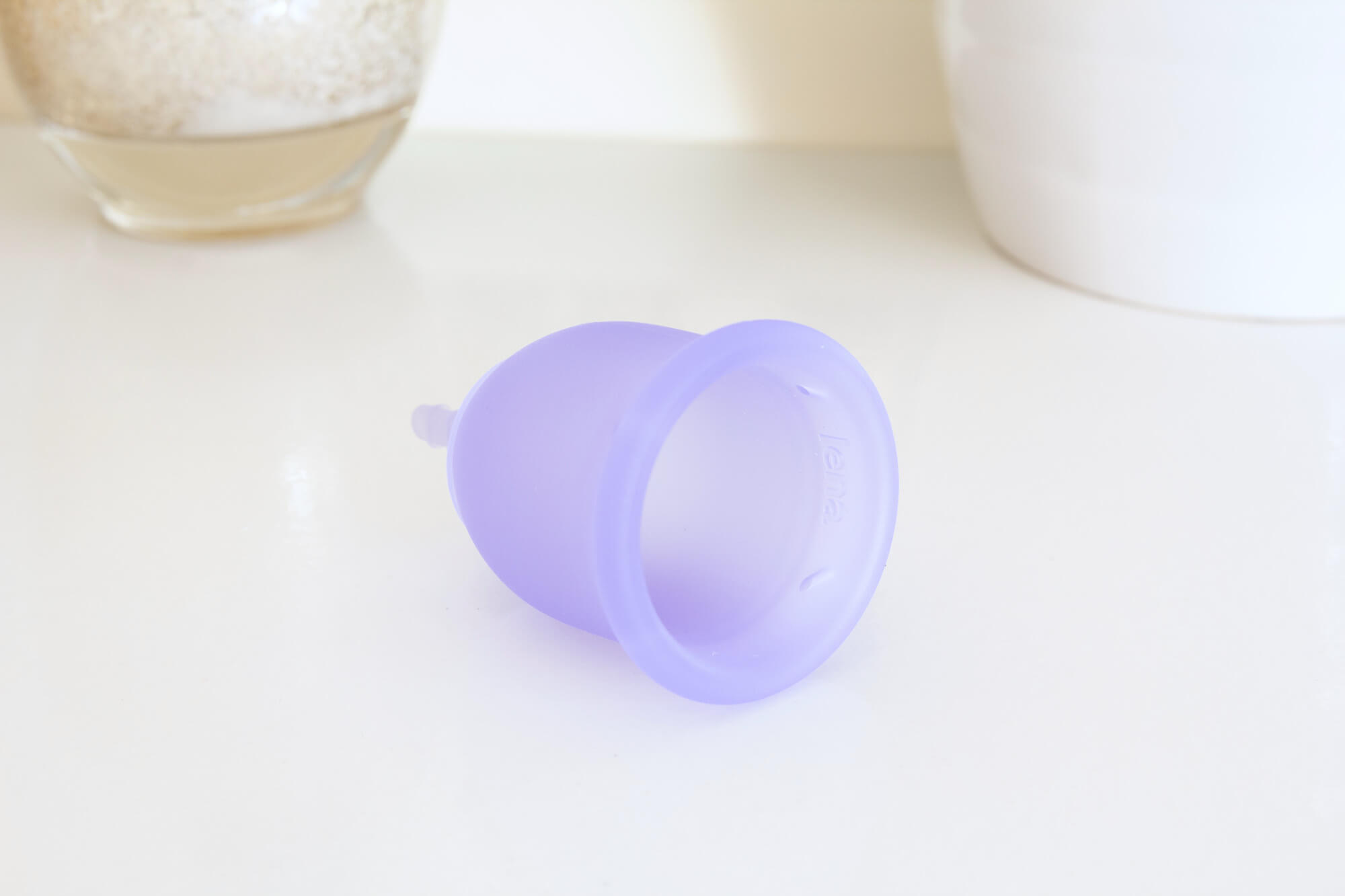
Made of super smooth silicone, the Lena Cup is a hair firmer than the MeLuna, with a tulip-shaped body. Slightly broader than the MeLuna cup, the Lena may be a good choice for women with wider vaginas.
Like the MeLuna, the Lena has the perfect balance of softness and firmness that makes it easy to insert and position without any trouble. Once in place, we couldn’t feel the cup at all, and actually forgot all about it for a while. The cup is also simple to grip and remove, with pronounced striations at its base and a well-ribbed stem.
The Lena cup comes in small and large sizes, with a Lena Sensitive cup option for women who prefer a softer cup. For those who want to try out both sizes (or have a varying flow), there’s also a two-pack available with both a small and large cup for a reduced price.
For first-time users, the Lena website does a good job of demystifying menstrual cups with how-to videos and illustrations and a quiz to help determine cup size. Though the Lena site offers customer service assistance via email, we wish it included a chat feature for newbies to get their questions answered in real time. The cup comes with an illustrated guide featuring insertion tips, folding techniques and troubleshooting, as well as a carrying pouch.
Key takeaways
- Like the MeLuna cup, the Lena Cup takes the work out of insertion and extraction; it’s just soft enough to fold easily, and just firm enough to pop open on its own once positioned.
- The Lena features pronounced ribbing on its stem and base, making it easy to grip during removal.
- Lena offers fewer options than MeLuna: small and large sizes, with a Lena Sensitive option.
The other finalists we tested
Saalt
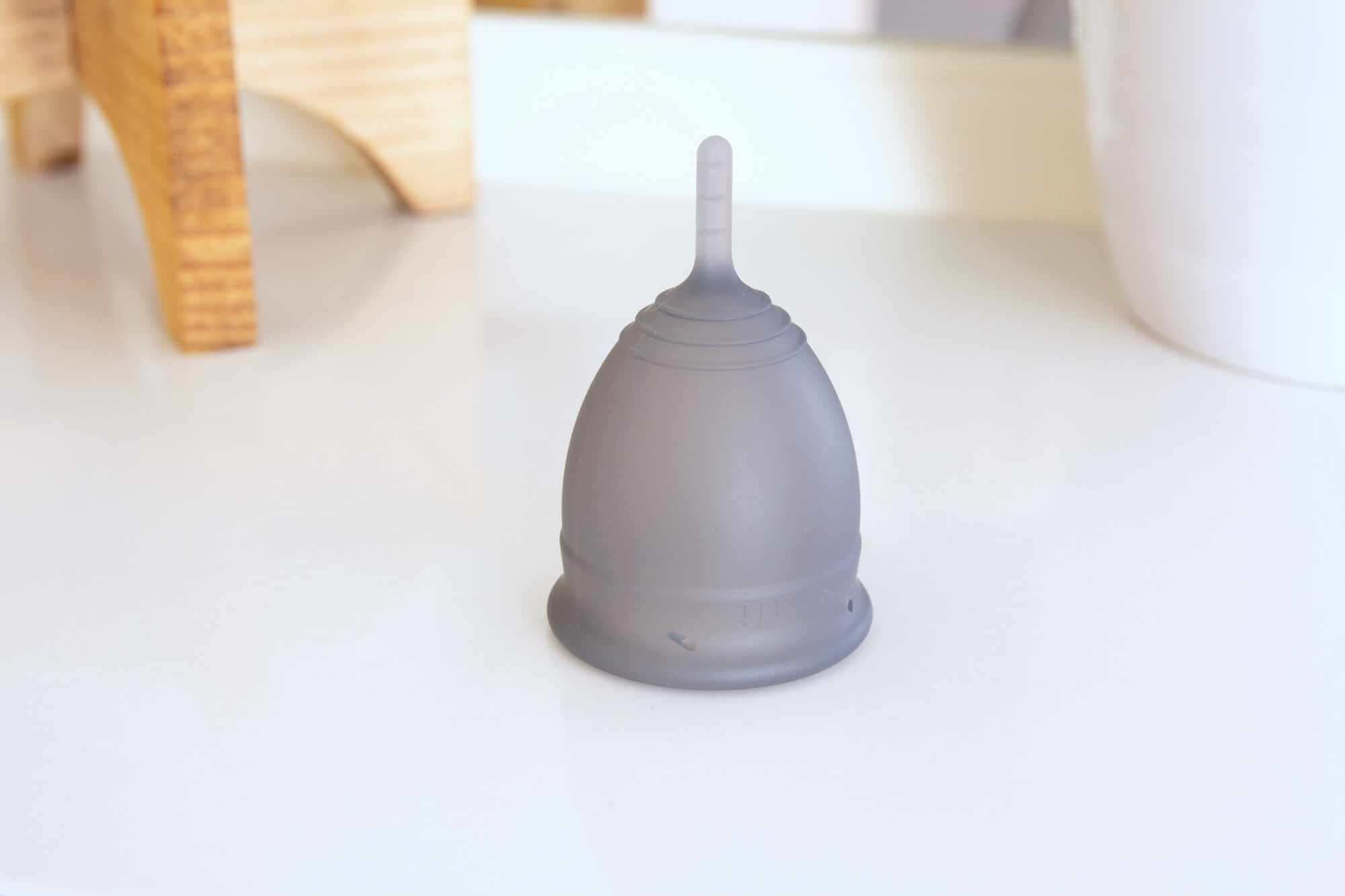
One of the softest cups on our lineup, the Saalt – Soft Cup is pleasant to use and a good choice for those who experience heavy cramps or bladder sensitivity. The Saalt cup was easy to fold and keep folded during insertion, though it wasn’t immediately apparent whether it had opened inside of us; it took us a minute to make sure. The bottom of the Saalt is easy to grip for removal, but we felt that its stem was not textured enough to get a good grasp on it.
Saalt gets extra points for its chic carrying pouch and pretty packaging, as well as its gorgeous, information-packed website.
DivaCup
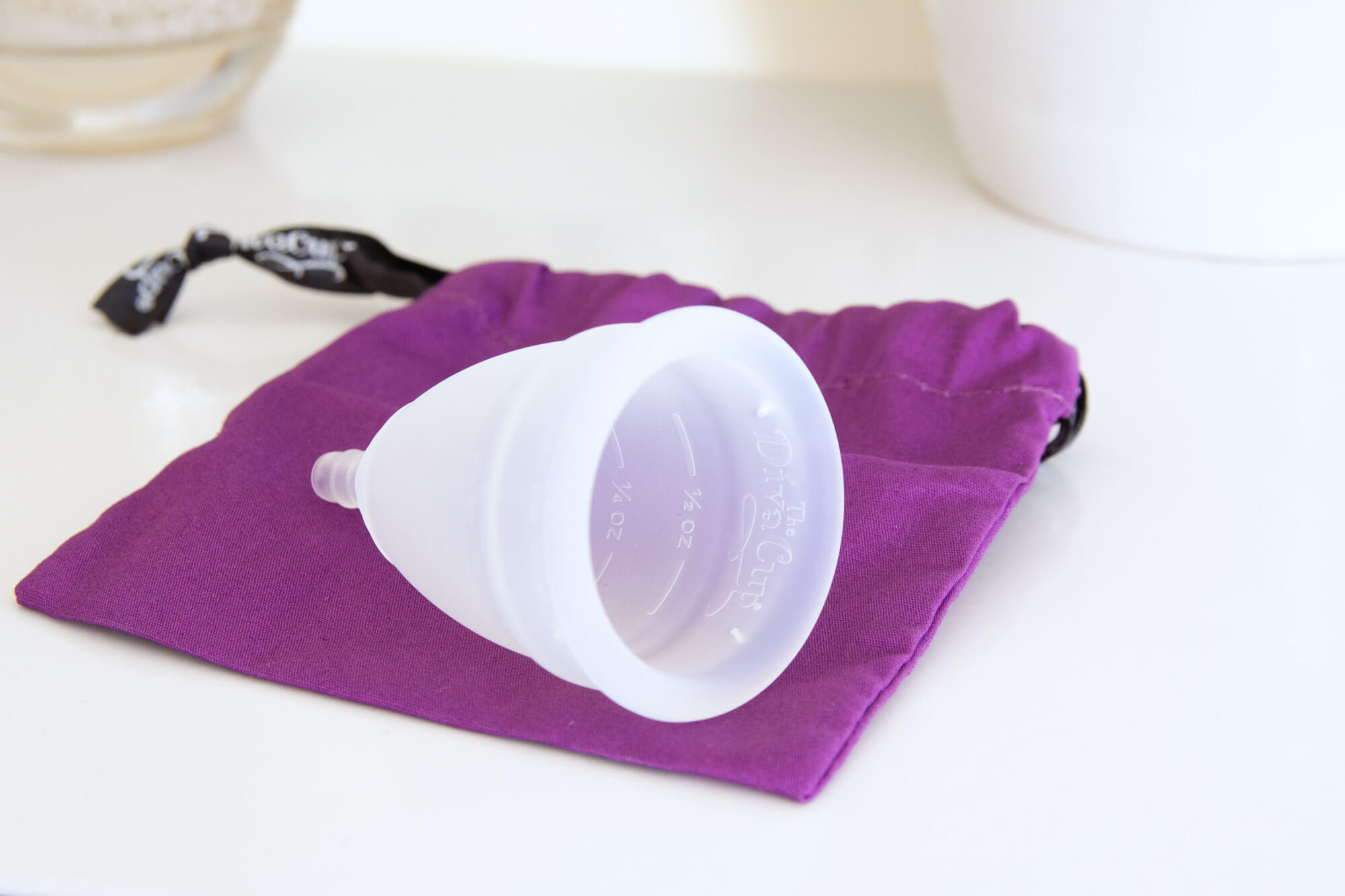
Menstrual cups are generally limited in drugstores, but the DivaCup is one reliable, high-quality brand that’s widely available. Firmness-wise, the DivaCup falls somewhere between the MeLuna Classic and the Saalt Soft; we found it easy to fold, insert and remove. Since its body is on the long side, it would work best for women with an average-to-high cervix. The DivaCup only comes in a clear color, which means discoloration is inevitable; it also has a hollow stem, which could be burdensome to clean.
The DivaCup comes with a storage pouch and an extensive illustrated guide with insertion advice, folding techniques and troubleshooting tips.
Lunette Cup
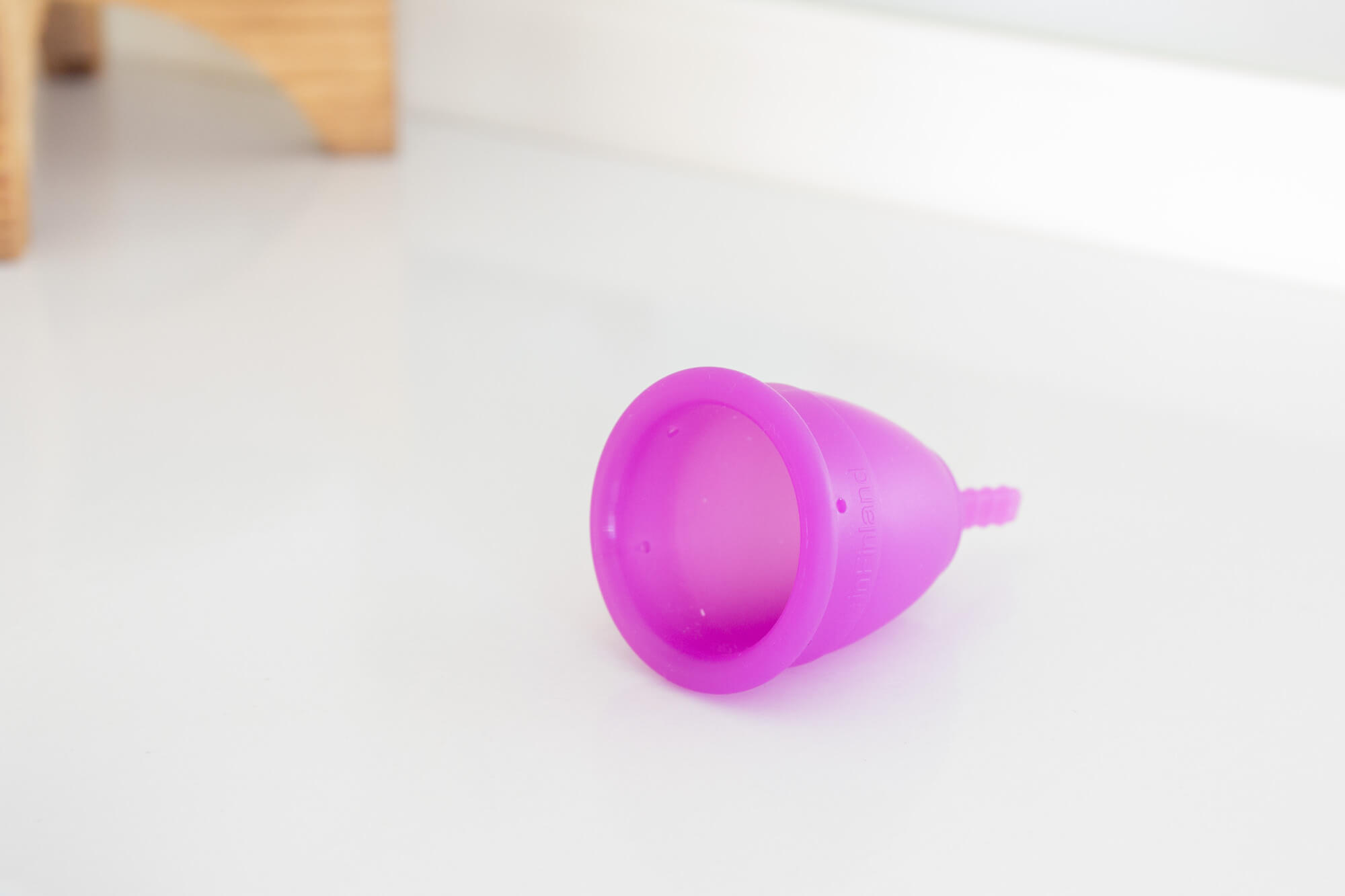
The firmest of our cup contenders, the Lunette Cup, was difficult to keep folded during insertion; it kept popping open before we had gotten it into place. However, once positioned, we couldn’t feel it at all. When it came time to take out the Lunette, the stiffness of the material made it tough to work the cup back out, even after pinching and folding.
On the plus side, Lunette has one of the most intuitively designed, informative websites of the bunch, with a fantastic how-to section, instructional videos, a “menstrual cupbot” to answer questions in real time and even blog posts and articles to raise disease awareness and help women understand their bodies better. The cup itself comes with a storage pouch and short instructional guide.
Intimina – Lily Cup

The longest cup in our lineup, the Intimina – Lily Cup is uniquely designed; while the other cups have a distinct body and stem, the Lily’s body tapers gently down to the end of its stem. This means the stem can’t be trimmed to shorten the overall length of the cup, making this cup best for women with high cervixes. Intimina also offers Lily Cup One and Lily Cup Compact options, both of which are also on the long side and not trimmable.
The Lily is also the softest cup in our lineup, making it very easy to fold and insert but difficult to pop open. In fact, we were never entirely sure that the Lily had opened correctly; the only indication was the fact that we didn’t experience any leaks. The Lily comes with a storage pouch and a very brief how-to guide.
The bottom line
With its broad range of cup choices and easy-to-use design, the medium-soft MeLuna – Classic Cup is our first choice for beginners wanting to give menstrual cups a try. We also loved the Lena Cup, a medium-soft cup that folded effortlessly for insertion, popped into place on its own and featured a well-ribbed stem for easy removal.
More Reviews
The Best Alkaline Water Filter Pitchers
Brita - Longlast
Bauerfeind
Lululemon - Energy
Feetures - Elite Max Cushion
Patagonia - Strider Pro
ZFOsports
SPRI - High Density Roller
No Cry Cordless
Pado - PureWave - CM-07
The Best Neck & Shoulder Massagers
RESTECK - Neck Massager
The Best 1-Gallon Water Bottles
Toba - 1-Gallon Plastic Water Bottle




